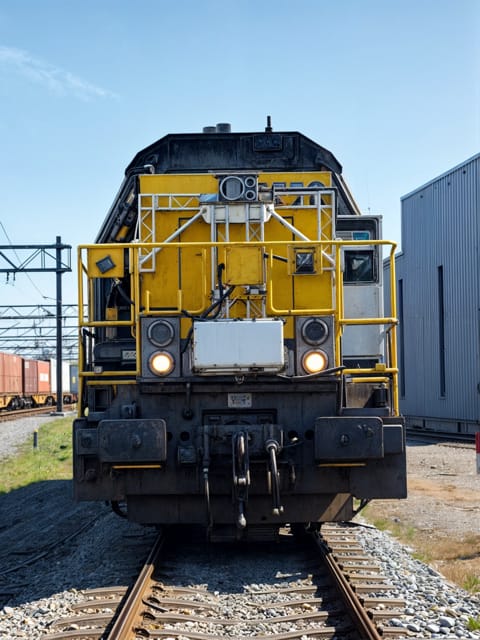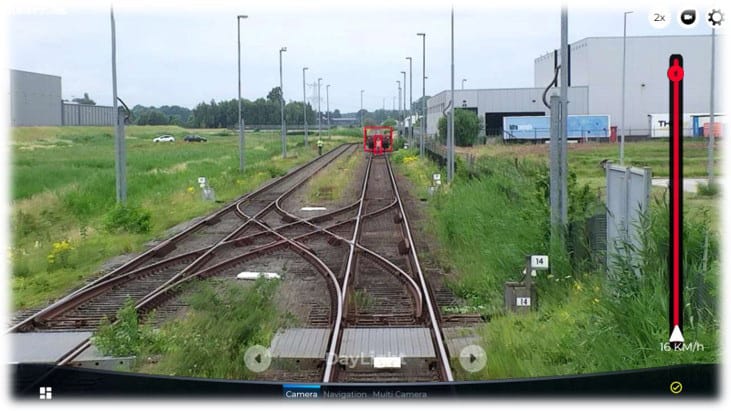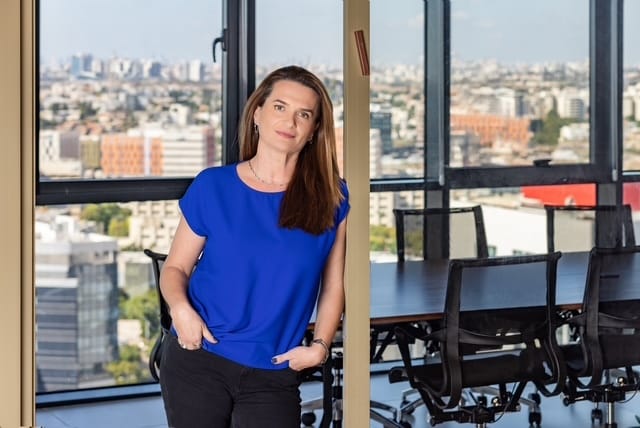- #movingpeople
- Posts
- #movingpeople-meets NIART Systems
#movingpeople-meets NIART Systems
Protecting people and tracks from over 1km away.
Hi Vicky, founder and CEO of NIART Systems. Today, we’re diving into the rail industry and how to avoid accidents. “NIART” is actually “train” spelled backwards. Tell me about the company.
NIART develops long-range perception systems. A perception system collects, analyses, and understands sensory information, and we combine multiple data sources to gain situational awareness. We use those capabilities to provide the rail industry with enhanced safety.
Our system includes a proprietary long-range radar system; an optics suite, with both day and thermal night vision; GPS; and an auxiliary shorter-range LiDAR. This combination allows us to see farther than the train driver and be relevant 24/7, in all weather conditions.
We can detect a small object - a small child, a sheep - from over 1km away. In any visibility. We can spot larger objects, such as a bus or another train, from 2km away.

#movingpeople is a part of Mobility Business - a consultancy dedicated to "All Things Mobility", focused on growth.
And then what happens? NIART presses the brakes?
Today, trains are not fully automated, so our system still “speaks” to the driver. It provides the alert, and the driver is responsible for taking the required action.
We recently completed a proof-of-concept with Alstom, where we tested autonomy for a European client. Alstom brought in the AutoPilot and controlled the driverless train, and we showcased the safety elements NIART perception enables. So driverless trains are coming - but not just yet. Until then, we assist the train driver and make sure the alert is provided early enough for them to make the call.
Ok… I thought things were a bit more advanced. So what happens today if it's foggy or rainy?
Trains slow down, sometimes delayed or cancelled altogether. In harsh fog corridors in India, for example, train collisions with terrible toll of injuries and fatalities is still a reality.

Who are your target customers? Where do you focus your tech?
We focus on passenger and freight trains travelling at up to 150km/h (~90 mph) on mainlines and regional rail. We're designed for open tracks and longer ranges, so trams on one end and bullet trains on the other aren’t the verticals we target.
Our first project was in India. We won a tender to equip 5 trains - each train has two driver cabs, one for each side of the train, so that’s 10 systems. India is huge, there are 12,000 locomotives in the entire country. The Indian Ministry of Railways, and they have a dedicated ministry for that, holds the second-largest government budget in India after defence.
But we’re not limited to India - we’re also targeting Europe and North America. Any passenger or freight train travelling at up to 150km/h.
How did the company come to be?
We originated in the aerospace industry, which is where our radar expertise comes from. Initially, as an innovation initiative at Elta Systems, we identified the gap in the train industry and formed a team around that need. At first, we all worked on NIART as a “20% project”, but we quickly convinced management to spin us off. Initially, eight people, funded via the innovation unit, were working in a remote location until we raised external funding. That was May 2024, and since then, we’ve been fully independent from our corporation. Today we have 25 people on the team, and we are hiring!
Tell me more about the need in the market.
I’ll divide the answer into two parts - today, leaning on the train driver's responsibility, and in a future driverless world.
For today: The European Union Agency for Railways estimated the cost of significant railway accidents in 2022 in the EU-27 to be about €4 billion. Our system is focused on safety, so obviously we can help reduce that number significantly.
The immediate payback here is the efficiency. Better safety means trains can travel faster, spaced tighter, and fewer delays. Today, each train may block a segment of 1.5-2 km each way. We can reduce that buffer, creating better timetable efficiency. In the U.S., any delay can cost roughly $100k and we can prevent that , to help trains move smoothly all year round.
And we also save on energy - fuel or electricity - by minimising unnecessary braking and acceleration.A reduction even by 2%, is a big savings.
In a driverless future, systems such as NIART will absolutely be necessary. We’ll get there, first because the technology allows it, and second because we’ll have to - drivers are getting older, and are not being replaced. In the UK the average train driver age is around 48 and 40% are over 50. Those numbers are similar across Europe.
Tell me about your business model.
We think the best model is to work via partners, not directly with the operator or authority. We provide the technology and hardware; our partners are boots-on-the-ground and handle first-level maintenance. We currently have partners in India and Australia, and we are looking for partners in Europe and the U.S.
We’re in a new field, so there are always new opportunities. For example, our client in India asked us to help with track-mapping. We didn’t have that capability at first - and thanks to their request and persistence, now we do.
What are your current focus areas?
We’re working on Version 2 of our product - better sensors, better integration.
I’ve mentioned partner expansion - and we’re also seeking design partners: train companies willing to test the tech.
Before we finish, tell me about yourself, your journey. And leave us with advice for fellow entrepreneurs:
I hold an MSC in Electrical Engineering and worked at Elta for 20 years in engineering and management roles, managing defence & aerospace projects, influencing teams of hundreds of employees. The NIART opportunity was perfect: I wanted to explore new fields and technologies, and move outside of the corporate world.
My advice: don’t be afraid to pivot. No matter how invested you are. Nothing replaces market fit. Even if you need to start at square one - do it. The experience you already have will help you complete the pivot.#movingpeople is a weekly mobility & delivery newsletter - from Ride-Hailing & Robotaxi through Remote-Driving & Delivery Drones to e-bikes and Autonomous Freight & Logistics.

Thank you for reading. If you like what you're reading, please share it with your friends and colleagues so they can benefit from it too.
